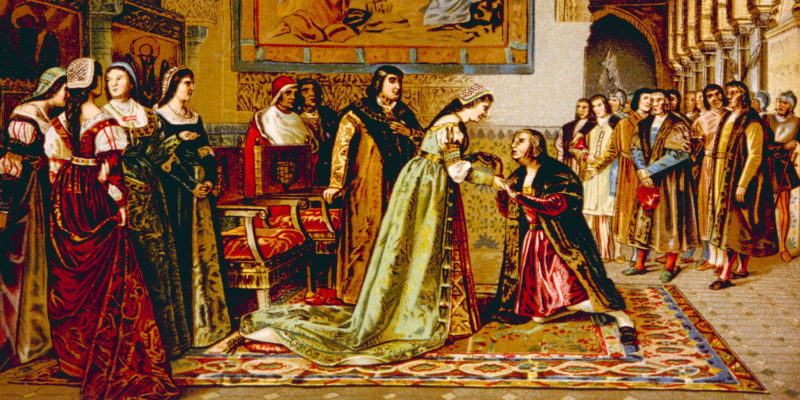We explain what a monarchy is, what its main characteristics and its history are. Also, the types of monarchies that exist.
What is the monarchy?
The monarchy is the form of government in which power is centered on the king , a position accessed by blood lineage. It consists of the presence of a monarch with absolute power, the opposite of republican forms of government in which the legislative , executive and judicial powers are independent from the head of state .
The monarchical system considers the king as a representative of divine power on Earth (who receives power directly from the gods ). It is his destiny, from his birth to his death, to fulfill his mandate. In the event that he cannot exercise as monarch for reasons of force majeure, his first-born son or the closest relative is appointed to occupy the position.
Characteristics of the monarchy
The monarchy is characterized by:
- Being a political system based on the government of a single person , that is, it has absolute power.
- To have a king who can only access the position in a hereditary way .
- Having a monarch who is a symbol of continuity and stability.
- Be a single political-administrative organization .
- Be constituted by traditional norms and mandates .
- Being a reign for life , that is, ruling the same royal line for life, except that the system evolves or is overthrown.
- Being one of the oldest forms of government .
History of the monarchy

During the Middle Ages , from the 5th century on, monarchies were based on theocratic traditions that considered kings as representatives of God on Earth and who had to protect their people.
In ancient times it was believed that monarchs were direct descendants of the gods and that they had divine power to rule. The monarch was a symbol of government continuity and stability.
Monarchies are one of the oldest forms of government, such as the kingdom of England that was founded in 927 and lasted in an absolutist way until 1215, the year in which the Magna Carta ( constitution that proposed the division of powers) was accepted. by King John I of England. Over time, the monarchy evolved and various types emerged that vary according to the level of power exercised by the monarch.
Evolution of the monarchy
Most monarchies throughout history have been led by a single person who had the economic, political, military and social power of the kingdom.
Beginning in the 19th century, many monarchies have evolved to become parliamentary democracies . In England the process began in 1215 after the Magna Carta was formed. The kingdom was consolidated as a parliamentary monarchy in 1689 after the Glorious Revolution in which King James II Stuart, who had maintained political instability since 1642, was overthrown.
Currently there are few absolute monarchies , among the main ones are:
- Saudi Arabia. It is a country on the Arabian peninsula, in western Asia .
- Brunei . It is a small nation on the island of Borneo, in Asia
- Bhutan . It is a Buddhist kingdom on the eastern limit of the Himalayas, in Asia.
- Jordan. It is an Arab country on the banks of the Jordan River, in Asia.
- Kuwait. It is an Arab country in the Persian Gulf, in Asia.
- Morocco . It is a country in North Africa .
- Swaziland. Also called Eswatini, it is a small monarchy in southern Africa.
One of the most recent monarchies abolished was that of the kingdom of the island of Mauritius in East Africa east of Madagascar, which in 1968 became independent from the Commonwealth or nations linked to the United Kingdom and in 1992 was declared a parliamentary republic.
Types of monarchies
 There are four main types of monarchies:
There are four main types of monarchies:
- Theocratic monarchy. It is the one that does not present a division of powers and the king has absolute power, in addition, the dominant religion is imposed so that state policies share many of the religious principles, as it happens in the Arab countries or in the Vatican.
- Absolute monarchy . It is the one that does not present a division of powers, so the king is the one who concentrates the total control of the State and is considered as a representative of God on Earth. It is one of the oldest forms of government.
- Constitutional monarchy . It is the one that presents a division of powers, so that the king fulfills the function of head of state and exercises control over the executive power. It is a type of transitional government between the absolute monarchy and the parliamentary one. The legislative power is controlled by the people through the representatives of the assembly.
- Parliamentary monarchy . Also called "democratic monarchy." It is the one that presents the widest division of powers and none falls on the king, who only fulfills the function of head of state. The legislative, executive and judicial powers are independent of the crown and exercised by an elected parliament and government.
The above content published at Collaborative Research Group is for informational and educational purposes only and has been developed by referring reliable sources and recommendations from experts. We do not have any contact with official entities nor do we intend to replace the information that they emit.
Veronica is a culture reporter at Collaborative Research Group, where she writes about food, fitness, weird stuff on the internet, and, well, just about anything else. She has also covered technology news and has a penchant for smartphone stories. .
Leave a reply
Your email address will not be published. Required fields are marked *Recent post

Sport: What Is It, Types, Risks, Features, Characteristics and Examples

Dogs: Emergence, Features, Characteristics, Feeding and Breeds

Story: Definition, Elements, Structure, Features and Characteristics

